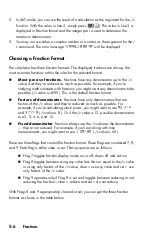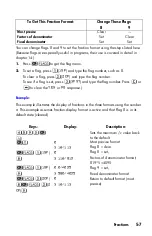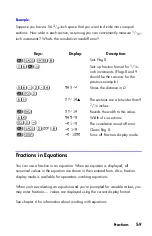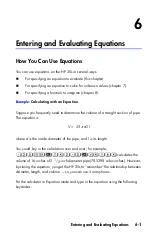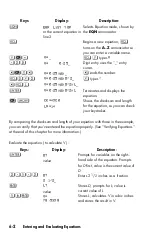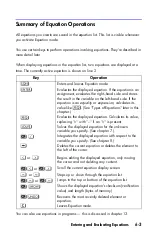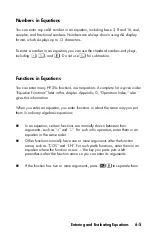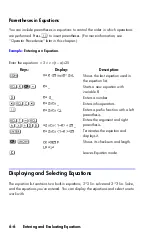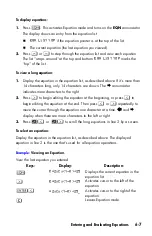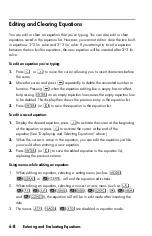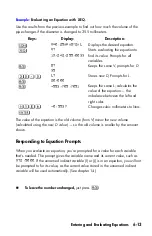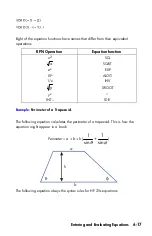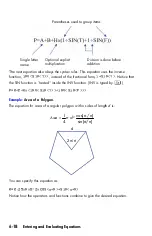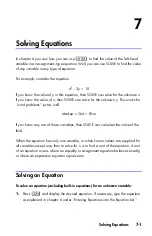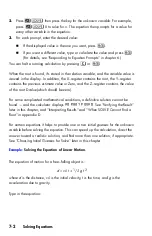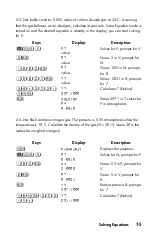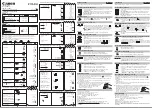
6-10
Entering and Evaluating Equations
Expressions.
The equation does
not
contain an "=". For example,
x
3
+ 1
is an
expression.
When you're calculating
with an
equation, you might use any type of equation —
although the type can affect how it's evaluated. When you're solving a problem for
an unknown variable, you'll probably use an equality or assignment. When you're
integrating a function, you'll probably use an expression.
Evaluating Equations
One of the most useful characteristics of equations is their ability to be
evaluated
—
to generate numeric values. This is what enables you to calculate a result from an
equation. (It also enables you to solve and integrate equations, as described in
chapters 7 and 8).
Because many equations have two sides separated by "=", the basic value of an
equation is the
difference
between the values of the two sides. For this calculation,
"=" in an equation is essentially treated as "–". The value is a measure of how well
the equation balances.
The HP 35s has two keys for evaluating equations:
and
. Their
actions differ only in how they evaluate
assignment
equations:
returns the value of the equation, regardless of the type of equation.
returns the value of the equation —
unless
it's an
assignment
–type
equation. For an assignment equation,
returns the value of the right
side only, and also "enters" that value into the variable on the left side — it
stores the value in the variable.
The following table shows the two ways to evaluate equations.
Summary of Contents for 35s
Page 1: ...HP 35s scientific calculator user s guide H Edition 1 HP part number F2215AA 90001 ...
Page 14: ...12 Contents ...
Page 15: ...Part 1 Basic Operation ...
Page 16: ......
Page 46: ...1 30 Getting Started ...
Page 63: ...RPN The Automatic Memory Stack 2 17 A Solution ...
Page 64: ...2 18 RPN The Automatic Memory Stack ...
Page 74: ...3 10 Storing Data into Variables ...
Page 180: ...12 14 Statistical Operations ...
Page 181: ...Part 2 Programming ...
Page 182: ......
Page 246: ...15 12 Solving and Integrating Programs ...
Page 270: ...16 24 Statistics Programs ...
Page 284: ...17 14 Miscellaneous Programs and Equations ...
Page 285: ...Part 3 Appendixes and Reference ...
Page 286: ......
Page 308: ...B 8 User Memory and the Stack ...
Page 322: ...C 14 ALG Summary ...
Page 336: ...D 14 More about Solving ...
Page 346: ...E 10 More about Integration ...
Page 352: ...F 6 Messages ...
Page 370: ...G 18 Operation Index ...
Page 382: ...Index 12 ...

